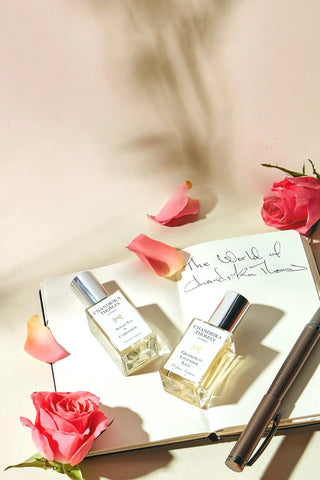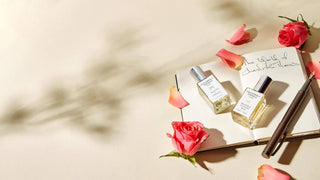Oriental perfumes are renowned for their deep, exotic, and luxurious qualities. These fragrances offer rich, sensory experiences that resonate with those who seek complexity and depth. With warm, spicy notes and an air of mystery, oriental perfumes have a seductive and opulent character, making them ideal for evening wear or special occasions. Their scents often tell stories of ancient cultures, weaving emotions and history through their carefully balanced notes, creating an unforgettable sensory experience.

History and Cultural
Background of Oriental Perfumery
The story of oriental perfumery traces back to the ancient worlds of art, trade, and spirituality. Long before modern fragrance houses emerged, the craft of scent-making thrived across the Middle East, South Asia, and North Africa, regions where perfume was more than luxury; it was a part of life’s sacred rhythm.
In ancient Egypt, perfumery was elevated to a divine art. Flowers, precious woods, resins, and spices were carefully blended into fragrant balms and oils, used in temples, rituals, and personal adornment. Scent was believed to bridge the human and the celestial, a means of honouring the gods while invoking protection and serenity.
Across these early civilisations, perfume carried meaning, power, and reverence. The essence of oriental perfumery was born from this blend of spirituality, craftsmanship, and cultural exchange, laying the foundation for the opulent and expressive fragrances we recognise today.
In the Arabian Peninsula, perfume-making was elevated to an art form. The use of rare woods and resins, such as oud, became a symbol of wealth, power, and social status. The perfumed oils crafted in this region were highly prized and traded across the globe. As the fragrance trade expanded along the Silk Road, the influence of oriental perfumery spread, shaping the scents of Europe and other parts of the world. Today, the legacy of oriental perfumery endures, blending ancient traditions with modern interpretations to create perfumes that reflect both history and luxury.
Key Aromatic Notes in Oriental Perfumes
-
Spices: Central to the allure of oriental perfumes, spices like cinnamon, cloves, cardamom, and saffron bring an undeniable warmth and intensity to the fragrance. These notes evoke visions of lively markets, with their intoxicating aromas filling the air. Spicy elements often come with either a rich sweetness or a fiery bite, layering the scent with complexity. When combined with softer, more subtle notes, these spices create an elegant balance, making them irresistible to those who appreciate both depth and spice in their perfumes.
-
Woods: Woody notes form the backbone of oriental fragrances, infusing them with warmth, depth, and a touch of sensual mystery. Two ingredients stand out as pillars of this tradition: sandalwood and oud. Sandalwood exudes a smooth, milky aroma, refined yet comforting, that brings balance and serenity to a perfume’s composition. Its gentle, creamy undertone creates an impression of understated luxury and tranquillity.
Oud, meanwhile, embodies the grandeur of the Orient. Harvested from the heart of the agarwood tree, it unveils a scent that is at once smoky, resinous, and slightly leathery. Complex and captivating, it conveys richness and sophistication, often serving as the defining element of a fragrance. Treasured for its rarity and depth, oud continues to be regarded as one of perfumery’s most exquisite and enduring materials, a note that leaves an indelible mark on both the perfume and its wearer.
-
Florals: While oriental perfumes are often defined by their woody and spicy notes, florals are also key to creating a balanced and multifaceted composition. Common florals used in oriental perfumes include rose, jasmine, ylang-ylang, and tuberose. Rose adds a soft, romantic touch, while jasmine introduces a lush and opulent quality. Ylang-ylang offers a tropical, exotic element, and tuberose brings a rich, creamy sweetness. These florals create a beautiful contrast with the heavier notes of spice and wood, enhancing the overall depth of the fragrance.
-
Resins: Resins like amber, frankincense, myrrh, and labdanum are integral to oriental perfumes, offering a rich, balsamic, and often spiritual quality. Frankincense and myrrh have been used for centuries in religious rituals, contributing smoky, mystical aromas that evoke introspection and sacredness. Amber adds warmth and a sweet, almost honeyed richness to the fragrance, while labdanum imparts a slightly animalic, resinous depth. Resins play a crucial role in shaping the perfume’s lasting impression, providing depth and ensuring the fragrance lingers on the skin for hours.

Oriental perfumes are an exquisite fusion of cultural heritage, natural beauty, and craftsmanship. From the rich spices to the smoky depth of oud and the mystical allure of resins, these perfumes offer an unforgettable experience. The oriental perfume family invites you to immerse yourself in history, mysticism, and opulence.
In the next note, we will explore how cultural influences have shaped the development of different oriental perfume families. From ancient traditions to modern interpretations, the cultural context behind each fragrance family enriches the experience of wearing these luxurious scents. Stay tuned to discover how these cultural connections continue to influence and define oriental perfumery.



